From the Beginning to the Capital: Shanhai Pass to Beijing
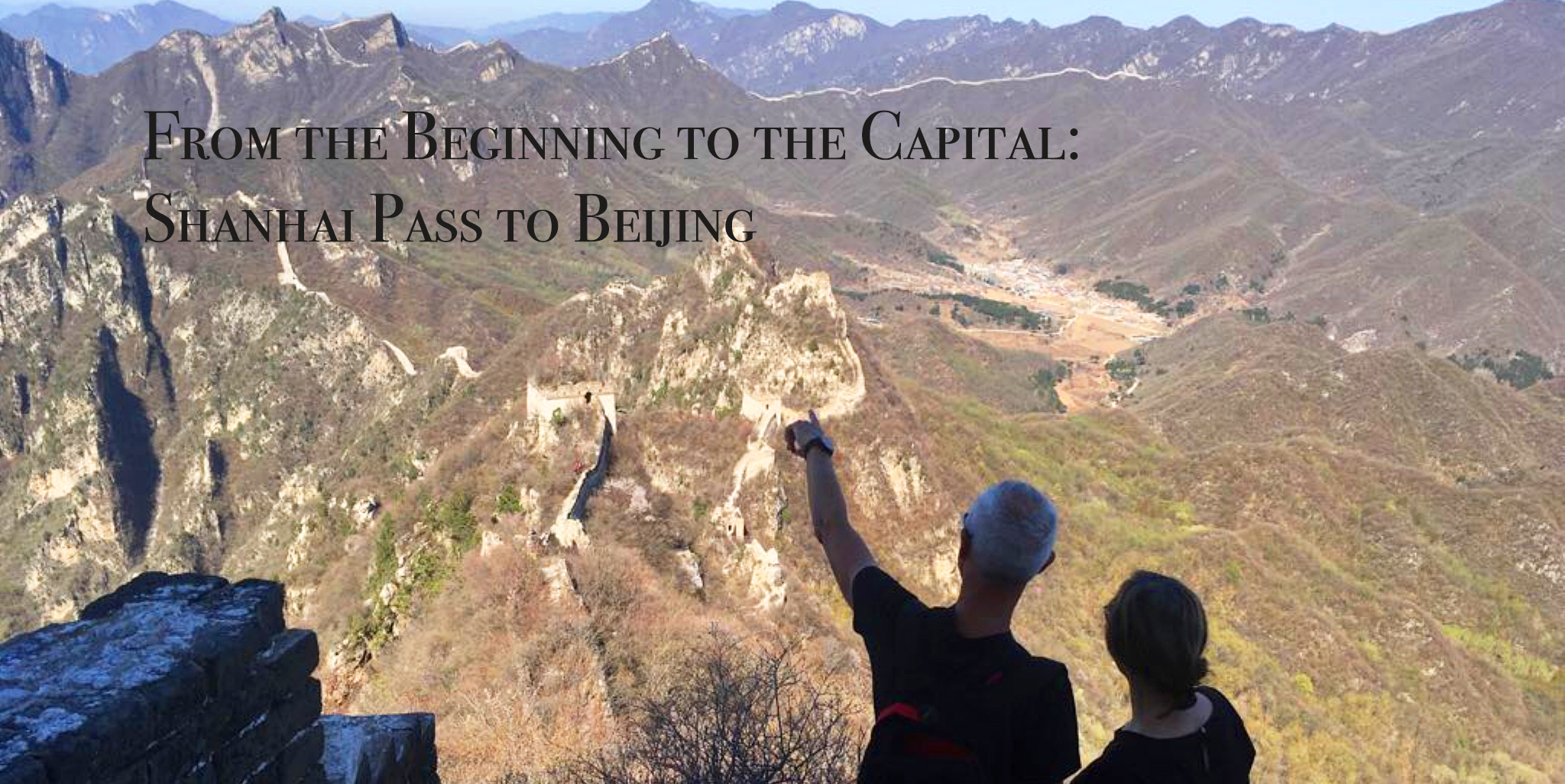
Highlights
Shanhai Pass and the Old Dragon’s Head
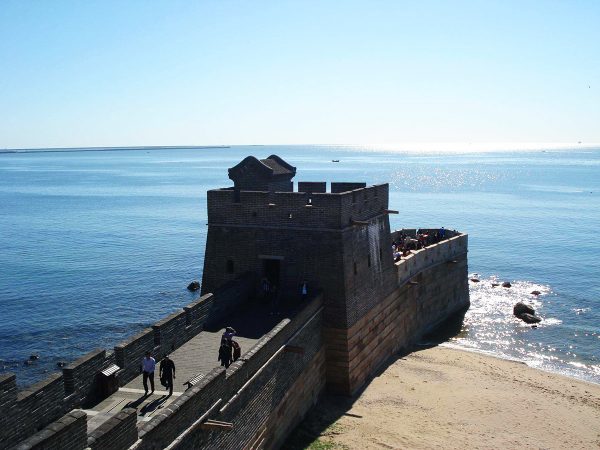 The name “Shanhai Pass” literally means “Mountain and Sea Pass” because it is strategically placed so that it joins the Bohai Sea to the southeast and the Yanshan Mountains to the northwest. It was built during the Ming Dynasty (1368-1644) and is one of the most well-preserved passes along the Great Wall.
The name “Shanhai Pass” literally means “Mountain and Sea Pass” because it is strategically placed so that it joins the Bohai Sea to the southeast and the Yanshan Mountains to the northwest. It was built during the Ming Dynasty (1368-1644) and is one of the most well-preserved passes along the Great Wall.
Many historians believe it was the eastern starting point of the Great Wall and above its East Gate there is a famous inscription which reads “First Pass Under Heaven”. This refers to the traditional view of Chinese civilization behind the wall and barbarian lands to the north of it, though we’re sure those “barbarians” might have a different view of the situation! In an act of ironic revenge, the pass was eventually captured by one such barbarian tribe named the Jurchen people, who went on to establish the Qing Dynasty (1644-1912).
Located in the city of Shanhaiguan, which takes its name from Shanhai Pass, the Old Dragon’s Head or Laolongtou (老龙头) is considered the starting point of the Great Wall and was originally built in 1381, during the Ming Dynasty. Its unusual name is derived from the fact that this bulky fortress resembles the head of a weary old dragon who has laid down to rest in the sea. It served as an important line of defence from attacks via both land and sea right up until the Qing Dynasty.
Highlights
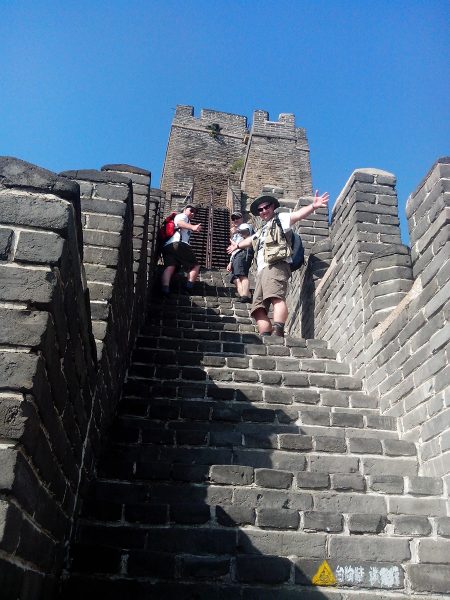 The Jiaoshan Section of the Great Wall
The Jiaoshan Section of the Great Wall
Known as the “First Mountain of the Great Wall”, Jiaoshan earned its unusual nickname simply because it is the first mountain that the Great Wall climbs after it begins in the east. In fact, the term “Jiaoshan” literally translates to mean “Horn Peak” due to its profound steepness. This section of the wall was built during the early Ming Dynasty and thus boasts a history that is over 600 years long!
What makes this section of the wall so unusual is that parts of it have been renovated in recent years, but other parts have been left to grow wild. This gives Jiaoshan a hybrid appearance, as both a beautifully preserved and partially crumbling section of the wall.
A major highlight at Jiaoshan is known as Big Flat Summit and represents the highest point of this section. From the top, visitors are rewarded with a breathtaking panoramic view of the surrounding Yan Mountains.
Highlights
The Dongjiakou Section of the Great Wall
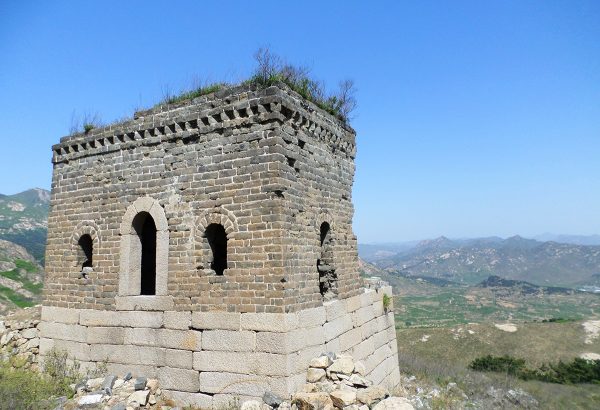 The Dongjiakou section of the Great Wall is widely considered to be one of the best-preserved sections of the original Ming Dynasty wall. It is estimated that around 60% of this section has been preserved in its original condition.
The Dongjiakou section of the Great Wall is widely considered to be one of the best-preserved sections of the original Ming Dynasty wall. It is estimated that around 60% of this section has been preserved in its original condition.
This is allegedly due to the efforts of locals from the nearby village of Dongjiakou, who are said to be the descendants of the original builders and guards of this part of the wall! They take their ancestral heritage very seriously and inspect the wall on a regular basis, making repairs as and when they are needed.
The Dongjiakou section is also renowned for its bricks, some of which have been carved with various images that are typical of the folk art style of southern China. This sets it apart from other sections of the Great Wall, which are invariably constructed from blank bricks.
Highlights
The Chengziyu Section of the Great Wall
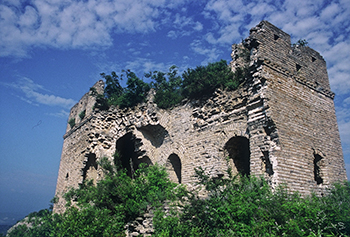 Unlike other sections of the Great Wall, which are named for their unusual shape or their lofty historical significant, the Chengziyu section is named simply after the nearby village of Chengziyu. The section itself is divided in the middle by a large valley, which separates the east part from the west part. This valley was once home to the Chengziyu Pass, which has tragically fallen to ruin.
Unlike other sections of the Great Wall, which are named for their unusual shape or their lofty historical significant, the Chengziyu section is named simply after the nearby village of Chengziyu. The section itself is divided in the middle by a large valley, which separates the east part from the west part. This valley was once home to the Chengziyu Pass, which has tragically fallen to ruin.
The Baiyangyu Section of the Great Wall
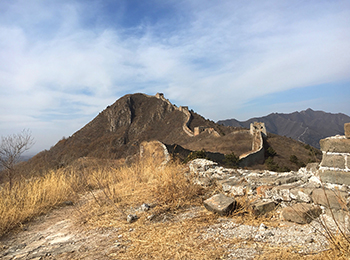 The Baiyangyu section of the Great Wall is located in Qian’an of Hebei province, beginning at Da’ao Tower in the east and ending at the Laojuntai Terrace of the Sidaogou section in the west. It was originally constructed towards the beginning of the Ming Dynasty and was greatly enhanced during the dynasty’s later years. It stretches for a whopping 4,550 metres in length and includes 1,500 metres of marble walling, which is highly unusual when compared to other sections of the Great Wall. This marble section of the Great Wall is 10 metres high and 5 metres wide. Of the 21 towers that once guarded this section of the wall, 6 of them are still in good condition.
The Baiyangyu section of the Great Wall is located in Qian’an of Hebei province, beginning at Da’ao Tower in the east and ending at the Laojuntai Terrace of the Sidaogou section in the west. It was originally constructed towards the beginning of the Ming Dynasty and was greatly enhanced during the dynasty’s later years. It stretches for a whopping 4,550 metres in length and includes 1,500 metres of marble walling, which is highly unusual when compared to other sections of the Great Wall. This marble section of the Great Wall is 10 metres high and 5 metres wide. Of the 21 towers that once guarded this section of the wall, 6 of them are still in good condition.
Unlike the Badaling section of the Great Wall, which is arguably the most famous, the Baiyangyu section receives markedly few visitors and has fallen into a state of disrepair, endowing it with a wild beauty that sets it apart from more complete sections of the wall. Thus it represents the ideal opportunity to enjoy a quiet hike through the countryside while simultaneously appreciating one of the greatest architectural achievements of mankind.
Highlights
The Huangyaguan Section of the Great Wall
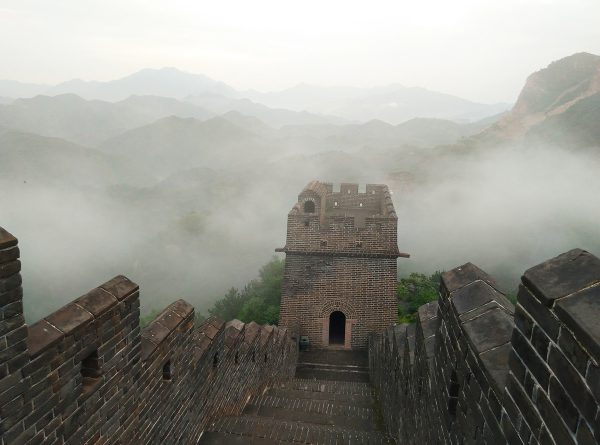 Huangyaguan or Huangya Pass was once one of the most important fortresses along the Great Wall. It was originally constructed during the Northern Qi Dynasty (550-577 AD), but the wall we see today is a result of major renovations that took place in 1569, during the Ming Dynasty, under the supervision of the renowned general Qi Jiguang.
Huangyaguan or Huangya Pass was once one of the most important fortresses along the Great Wall. It was originally constructed during the Northern Qi Dynasty (550-577 AD), but the wall we see today is a result of major renovations that took place in 1569, during the Ming Dynasty, under the supervision of the renowned general Qi Jiguang.
Its name, which translates to mean “Yellow Cliff Pass”, is derived from the fact that the cliffs to the east of the pass are made of yellow rocks that supposedly appear as though they’ve been gilded in gold when hit by the soft glow of the sunset.
The pass itself is often playfully referred to as the “Eight Diagram Fortification City”, as its labyrinth of narrow streets supposedly resembles the “Bagua” or “Eight Trigrams” symbol that forms an integral part of traditional Chinese culture. [Read more]
Highlights
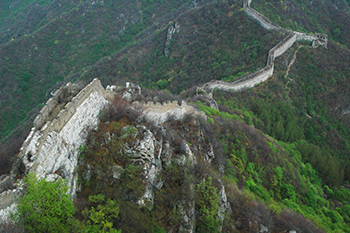 The Jiankou Section of the Great Wall
The Jiankou Section of the Great Wall
The term “jiankou” means “nocked arrow” and this section of the Great Wall was so-named because part of it resembles a large sideways “W”, like an arrow that is ready to shoot. It is located just outside of Xizhazi Village, about 30 kilometres (19 mi) from Huairou County.
A few highlights along this part of the wall include: the Nine-Eye Tower, a command tower that has nine holes resembling nine eyes on each side; the Sky Stairs, a set of stairs that elevate at a dizzying angle of 70 to 80 degrees; and “The Eagle Flies Facing Upward”, a watch tower built so high up that supposedly even eagles would have to fly facing upward to reach the top!
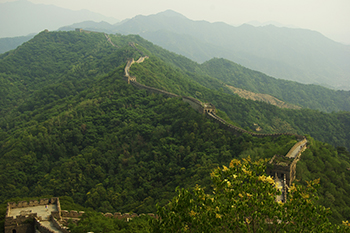 The Mutianyu Section of the Great Wall
The Mutianyu Section of the Great Wall
Mutianyu was originally built during the Northern Qi Dynasty (550-557) and stretches approximately 2 kilometres (1.5 mi) from Juyong Pass in the west to the Gubeikou section in the east. Since it protected one of the passes leading to Beijing, it was repaired regularly throughout the Ming Dynasty (1368-1644) and is now considered one of the most well-preserved parts of the Great Wall. It was partly made of granite and is considered virtually indestructible!
Highlights
Beijing Old Town
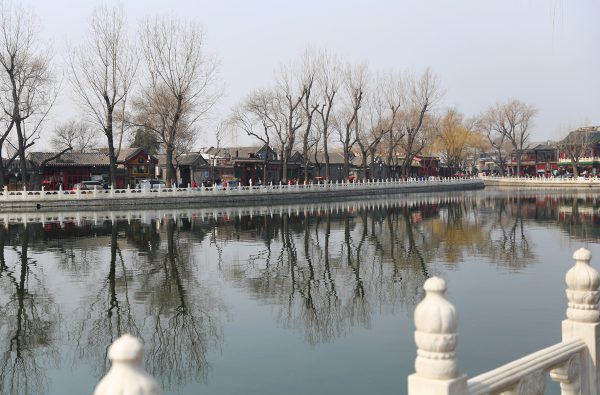 Throughout our tour, we will be visiting a number of hutongs in the old parts of Beijing. The term “hutong” is used to describe small alleyways that typically date back to the Yuan, Ming, or Qing dynasties and that are normally lined on either side by a traditional type of Chinese building known as a “siheyuan” or quadrangle courtyard. Below are listed some of the hutongs we will visit:
Throughout our tour, we will be visiting a number of hutongs in the old parts of Beijing. The term “hutong” is used to describe small alleyways that typically date back to the Yuan, Ming, or Qing dynasties and that are normally lined on either side by a traditional type of Chinese building known as a “siheyuan” or quadrangle courtyard. Below are listed some of the hutongs we will visit:
Yandaixiejie or “Skewed Tobacco Pouch Street”, which is one of the oldest hutongs in Beijing. This street’s unusual name was coined during the Qing Dynasty (1644-1912), when it was well-known for its numerous pipe and tobacco stores.
The Shichahai Area, which was built around three lakes, known respectively as Qianhai or “Front Sea”, Houhai or “Back Sea”, and Xihai or “West Sea”. Of these three, Houhai Lake is arguably the most popular, as it is surrounded by lively bars and restaurants.
Highlights
The Forbidden City
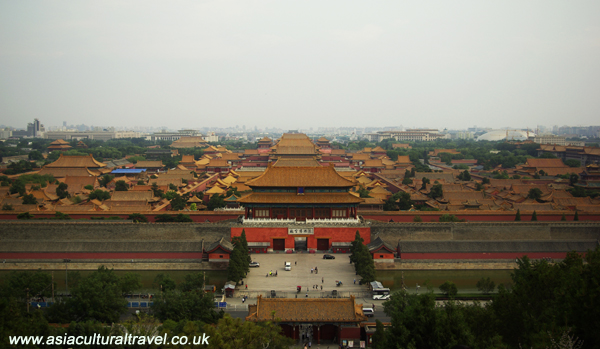 Construction of this colossal palace began during the early 15th century and was masterminded by the Yongle Emperor of the Ming Dynasty (1368-1644). It took over 100,000 artisans and one million laborers 14 years to complete and was home to 24 successive emperors over a period of 491 years. This means that, for every year it took to build, it got over 35 years of use. Talk about getting your money’s worth!
Construction of this colossal palace began during the early 15th century and was masterminded by the Yongle Emperor of the Ming Dynasty (1368-1644). It took over 100,000 artisans and one million laborers 14 years to complete and was home to 24 successive emperors over a period of 491 years. This means that, for every year it took to build, it got over 35 years of use. Talk about getting your money’s worth!
Since each emperor believed himself to be the son of heaven, the palace was built to imitate the legendary Purple Palace of the Jade Emperor (the King of Heaven). This is why it’s occasionally referred to as the Purple Forbidden City and why it originally had 9,999.5 rooms, as the Purple Palace supposedly had 10,000 rooms and it was considered improper for the Emperor to try and outdo his father! Nowadays the palace’s smooth red walls, yellow-glazed tile roofs, and intricate decoration have become a symbol of Beijing and one of the most recognizable relics of imperial China. Read more about The Forbidden City.
Highlights
The Temple of Heaven
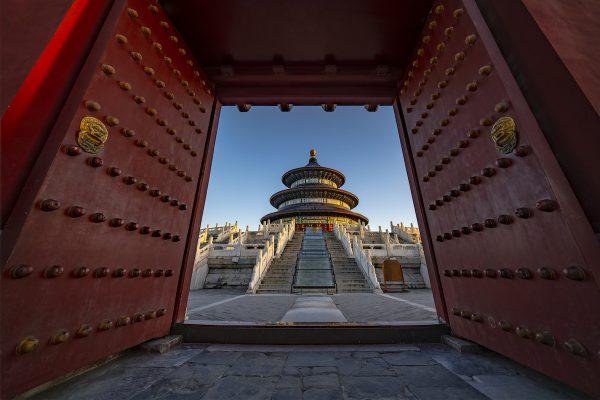 As an emperor of the Qing dynasty, the deity of highest import that the emperor should pay most attention to worshipping was the God of the Sun, because “without the sun there can be no life”. The Ming emperor Yongle, who built the Purple Forbidden City, also decided to build a temple to worship Heaven and pray for a good harvest.
As an emperor of the Qing dynasty, the deity of highest import that the emperor should pay most attention to worshipping was the God of the Sun, because “without the sun there can be no life”. The Ming emperor Yongle, who built the Purple Forbidden City, also decided to build a temple to worship Heaven and pray for a good harvest.
During the Ming and Qing dynasties, the emperors came here twice a year to worship – once on the 15th of January and once during the winter solstice (according to the Chinese lunar calendar).
In the Temple of Heaven the wall that stretches from east to west is 1,700 metres long, and the one that stretches from north to south is 1,600 metres long. The two major structures used in sacrifices are circular in design and they supposedly correspond to the shape of heaven.
Itinerary
Day 1 – Arrive in Beijing
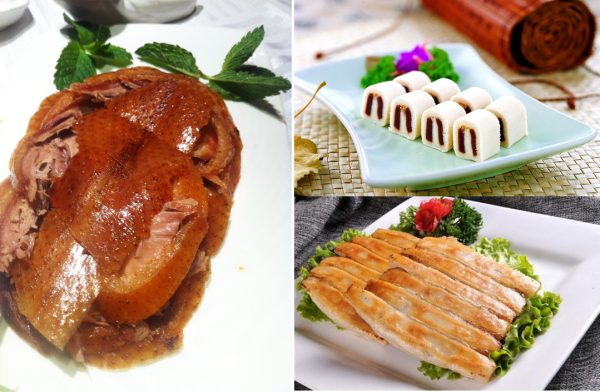 Meeting Point: We can either meet you at the airport or you can go to the hotel directly, where we will help you to check-in.
Meeting Point: We can either meet you at the airport or you can go to the hotel directly, where we will help you to check-in.
We will keep this day rather freeform, as you may not have much energy after the long flight. The only thing we have planned for this day is a welcome dinner in the evening, during which you will all be briefed by your guide about the next 9 days of trekking along the Great Wall.
We will of course help you make arrangements for breakfast or lunch if you arrive earlier in the day.
Dinner: Included. We will enjoy a welcome dinner made up of traditional Beijing-style cuisine.
Accommodation: 3-star hotel in the centre of Beijing Old Town.
Itinerary
Day 2 – Visit Shanhai Pass and the Old Dragon’s Head
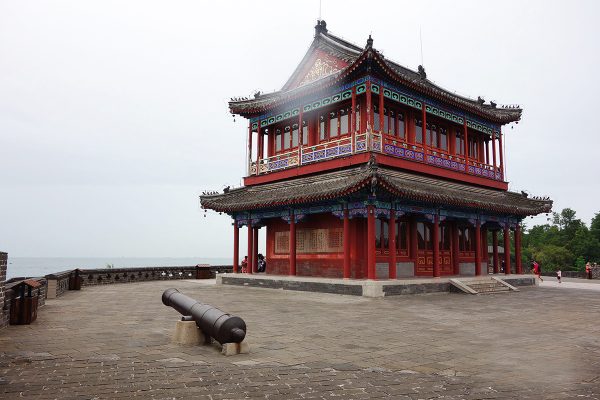 After an early breakfast, we will drive to Shanhai Pass (Shanhai Guan), which is in a town situated in the northeast of Qinhuangdao City, Hebei Province. This will take approximately 4 to 4 and a half hours.
After an early breakfast, we will drive to Shanhai Pass (Shanhai Guan), which is in a town situated in the northeast of Qinhuangdao City, Hebei Province. This will take approximately 4 to 4 and a half hours.
After lunch at a local Chinese restaurant, we’ll pay a visit to the Great Wall Museum in order to learn about the history of the Great Wall. Then, we will walk to the nearby Shanhaiguan Pass Fortress.
In the late afternoon, we will take a short drive down to the seaside and visit the real starting point of the Great Wall - the Old Dragon’s Head, also known as Laolongtou.
In the evening, we will be staying in a traditional courtyard-style hotel. This type of hotel is quite simple, but you will have your own private washroom and running hot water in the shower. Together, we will enjoy a delicious dinner of northern Chinese cuisine, which should give you plenty of energy for tomorrow’s hike!
All three meals: Included.
Accommodation: Traditional 4 Star boutique hotel in Shanhaiguan
Itinerary
Day 3 – Hike the Jiaoshan Section of the Great Wall
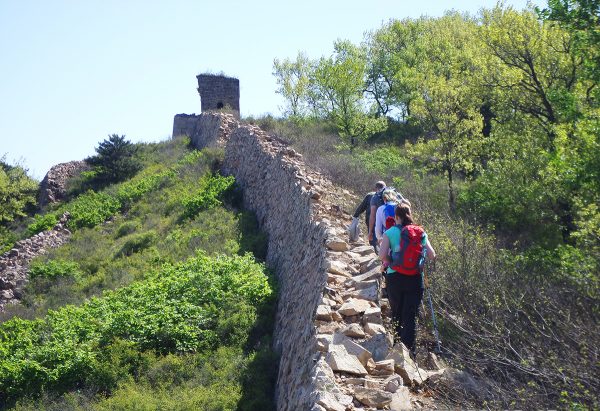
Today, we will start at the entrance to the Jiaoshan section of the Great Wall and head towards the Sandaoguan section.
To begin, we will hike from the bottom of Jiaoshan and head directly up towards the ancient parts of the wall, which will provide you with a sense of the wall’s long history and also give you the opportunity to enjoy a breathtaking panoramic view of the city of Shanhaiguan.
You may find that walking on these dilapidated parts of the Great Wall is quite challenging! The further we forge ahead, the more ruined and crumbling the wall will become. In some sections, you’ll find that only one side of the wall remains standing and the other side is simply a sheer cliff.
After an hour of climbing, we will reach Dapingding Peak, the main peak of Jiao Mountain, where we will be able to enjoy a clear bird’s-eye view of the city of Shanhaiguan in the early morning sunlight. We will then continue our hike northeast for around 3 to 4 hours, where we will spend some time on the wall and some time on rugged mountain paths. Our final destination is a beautiful valley that is overlooked by Mount Longevity. This tranquil valley is characterized by its peaceful forest and crystal-clear creeks.
At the base of Mount Longevity lies a small village known as Sandaoguan, which is home to just 35 families! We will walk down through the valley to this village and enjoy a short rest there before embarking on our onward journey. After we’ve soaked in the beauty of Sandaoguan, we’ll drive back to Qinhuangdao.
All three meals: Included.
Accommodation: Guest house near the Great Wall
Itinerary
Day 4 – Hike the Dongjiakou Section and the Chengziyu Section of Great Wall
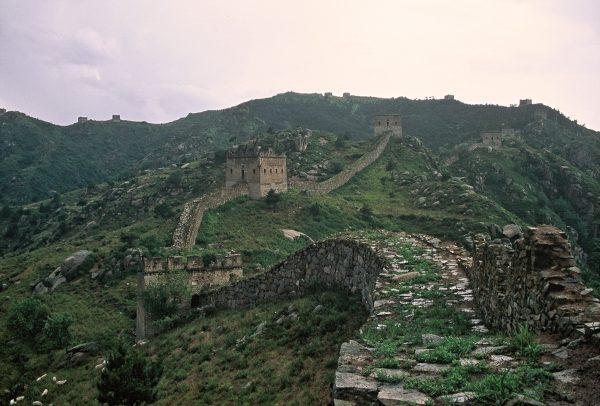 After breakfast, we will take a short drive to the Dongjiakou section of the Great Wall and begin our hike.
After breakfast, we will take a short drive to the Dongjiakou section of the Great Wall and begin our hike.
To begin, we will hike for 20 minutes until we reach Cihou Tower, which is a type of structure that is entirely unique to this section of the wall.
It will not take us long to hike the Dongjiakou section of the wall, as it is relatively short, with a length of only 5.9 kilometres. However, you may be surprised by how beautifully well-preserved this original section of the wall is, even though it is now over 600 years old!
Once we’ve finished our hike, we will return to the village of Dongjiakou and visit the ruins of the fortress. We’ll also have the opportunity to chat with a few of the local villagers, who are the descendants of soldiers that once guarded this garrison and who have inherited their ancestors’ mission of guarding the Dongjiakou section of the wall.
In the late morning, we will start our 3-hour hike westward towards the village of Chengziyu. After a late lunch, we will drive to the village of Baiyangyu, which should take around 2 and a half hours.
All three meals: Included.
Accommodation: 4 Star hotel in the centre of Baiyangyu.
Itinerary
Day 5 – Hike the Baiyangyu Section of the Great Wall
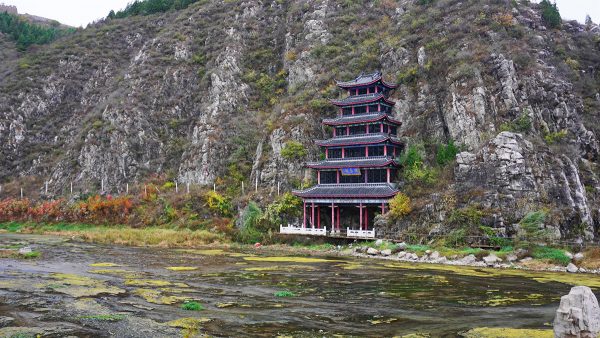 After breakfast, we will take a short drive to the village of Dalongmiao and hike westward for approximately 1 and a half hours. From there, we’ll encounter a 2-kilometre-long (1 mi) section known as the Marble Great Wall.
After breakfast, we will take a short drive to the village of Dalongmiao and hike westward for approximately 1 and a half hours. From there, we’ll encounter a 2-kilometre-long (1 mi) section known as the Marble Great Wall.
After another hour of hiking, we will reach an open space about half the size of a football field encircled by ramparts, which used to be the horse stables used by troops that were stationed at Baiyangyu. Once we pass through this large area, we will make our descent into the village of Baiyangyu. After taking a short rest in the village, we’ll drive to the Huangyaguan Section of the Great Wall, which will take about 3 hours.
All three meals: Included.
Accommodation: Guest house near the Great Wall
Itinerary
Day 6 – Hike the Huangyaguan Section of the Great Wall
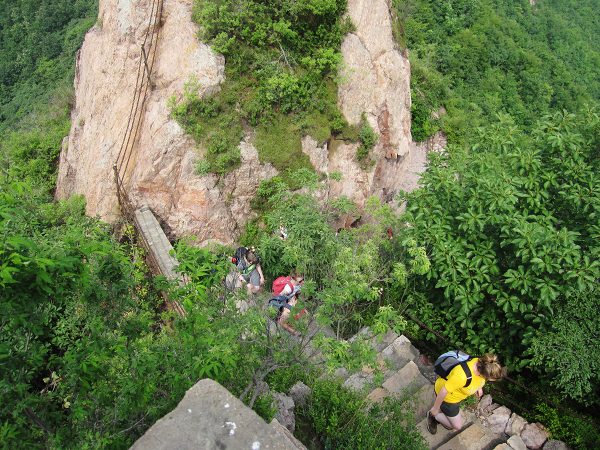 After breakfast, we will take a short drive to a small village near the Huangyaguan section of the Great Wall. From here, we will hike for about one hour and a half westward towards Huangya Pass, which is situated in a beautiful valley in the heart of the Yanshan Mountains.
After breakfast, we will take a short drive to a small village near the Huangyaguan section of the Great Wall. From here, we will hike for about one hour and a half westward towards Huangya Pass, which is situated in a beautiful valley in the heart of the Yanshan Mountains.
We will continue our walk by heading up a set of steep renovated steps, which will lead us to what appears to be a sheer cliff face. This is where we will encounter "Heaven’s Ladder", a steep climb of over 200 steps leading up to the precipice! Once at the top, when we have caught our breath, the path continues gradually up onto the ridge, where we will once again meet the old wall, which follows the highest contours of the mountain. After this climb, you will surely appreciate how difficult it was for the builders who were tasked with constructing this colossal fortification!
As we continue our hike during the afternoon, we will find ourselves following the wall as it gradually descends to the valley below, where our vehicle will be waiting. We will then drive to Jiankou, where we will stay overnight in a guesthouse at the base of Jiankou itself.
All three meals: Included.
Accommodation: Guest house near the Great Wall
Itinerary
Day 7 – Hike the Jiankou Section and Mutianyu Section of the Great Wall
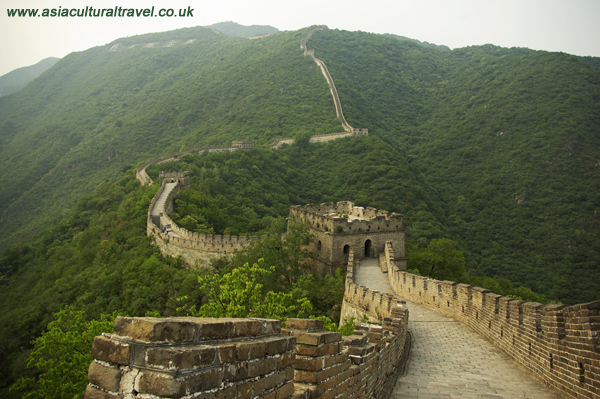 After breakfast, we will take a short drive to a small village near the Jiankou section of the Great Wall. The Jiankou section is beloved by photographers and is renowned as one of the most beautiful parts of the wild Great Wall near Beijing. After a half-hour climb upwards, through a gentle wooded area, we will climb up onto a portion of the wall that is rarely visited by tourists.
After breakfast, we will take a short drive to a small village near the Jiankou section of the Great Wall. The Jiankou section is beloved by photographers and is renowned as one of the most beautiful parts of the wild Great Wall near Beijing. After a half-hour climb upwards, through a gentle wooded area, we will climb up onto a portion of the wall that is rarely visited by tourists.
We will hike eastwards towards the Mutianyu section of the Great Wall. The hike itself is quiet and beautiful. The first four hours will be spent passing deserted sections of the wall that are still in their original state, while the final part of the hike will take us to the wonderfully well-restored Mutianyu section. Prepare to be staggered by the difference between the wild Great Wall and the tourist-oriented part of the Great Wall!
We will enjoy our dinner together at the bottom of Mutianyu and then drive back to Beijing.
All three meals: Included.
Accommodation: 3-star hotel in the centre of Beijing Old Town.
Itinerary
Day 8 – Exploring the Hutongs of Beijing
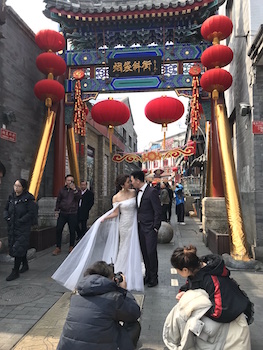 We will start later today in order to give you plenty of time to recover from the long hike. You will have the morning to enjoy by yourself. Our guide will pick you up from the hotel at 14:00pm to start Hutong tour. (Note: Our hotel is in the heart of the old town, so please feel free to explore the area by yourself in the morning if you are feeling energetic enough.)
We will start later today in order to give you plenty of time to recover from the long hike. You will have the morning to enjoy by yourself. Our guide will pick you up from the hotel at 14:00pm to start Hutong tour. (Note: Our hotel is in the heart of the old town, so please feel free to explore the area by yourself in the morning if you are feeling energetic enough.)
We will go to the “Skewed Tobacco Pouch Street” and the Shichahai area, where we will not only walk through the streets, but will also have the chance to visit the locals and welcomed as a guest into their home.
Breakfast: Included
Accommodation: 3-star hotel in the centre of Beijing Old Town.
Itinerary
Day 9 – Experience Ancient History in Beijing
In the early morning, after we’ve had breakfast, we will go to the Temple of Heaven in order to catch a glimpse of the local people doing their morning exercises. We’ll also have the opportunity to learn Tai Chi with a local teacher at the Temple of Heaven itself! Tai Chi, or Taijiquan in Chinese, is an outstanding gem of traditional Chinese culture that is valuable in promoting health, developing combat and self-defence skills, and improving concentration and overall well-being.
In the afternoon, we will follow in the footsteps of emperors, court ministers, and eunuchs by heading to the magnificent Forbidden City.
Once we’ve completed our tour of the imperial palace itself, we’ll go to the nearby Jingshan Park and climb up to the top of the hill where we will be able to enjoy a breathtaking panoramic view of the Forbidden City.
In the evening, we will enjoy a delicious dinner made up of the capital’s most famous dish: Peking duck! What was once a delicacy reserved for the emperor is now served in restaurants all around the world.
All three meals: Included.
Accommodation: 3-star hotel in the centre of Beijing Old Town.
Day 10 – Your Onward Journey
We will escort you to the airport with plenty of time ready for your flight. If you’re flight is in the evening and you’d like for us to arrange an extra day’s tour for you, please let us know where you’d like to visit and we’ll happily make arrangements for you.
Prices and What’s Included
Unlike other tours in China, we do not ask you to tip your tour guides and drivers each day. Instead, we pay our tour guides and drivers a fair wage, so they do not need to ask for tips.
Cost pp:
£1,650/8-12 people in one group; £1,850/6-7 people in one group;
£2,050/4-5 people in one group; £2,950/2-3 people in one group.
Single supp: £420 (Please be advised that, if you are the last person joining the tour or if there is no one in the group who you can share with, you may need to pay for the single supplement. We will advise you if this is the case when you enquire about the tour).
What’s Included: 9 nights of accommodation; all entrance fees to the attractions mentioned in the itinerary; one Tai Chi lesson with a local Tai Chi master; all meals mentioned in the itinerary; all transportation fees during the designated tour times; the services of an English speaking guide; a pdf file with useful information about the places in the itinerary; and any further help or information we can provide if you decide to continue traveling in China after the tour.
Accommodation: As shown in the itinerary
Food: Meals as shown in the itinerary. The lunch will be a simple picnic lunch on the days we are hiking the Great Wall. This also includes 4 litres of water on each day that we are hiking.
Transportation: Private vehicle
Duration: 10 days and 9 nights.
How can I sign up to this tour?
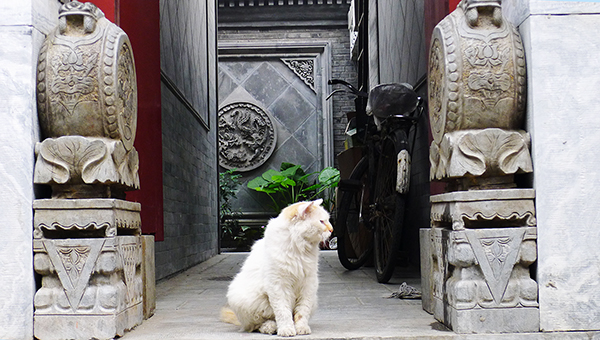 Step 1 ⇒ Contact us directly to talk about the tour in more detail.
Step 1 ⇒ Contact us directly to talk about the tour in more detail.
Step 2 ⇒ Book online and pay the £100 deposit. If you have an exclusive discount code, please enter it into the Enquiry box.
Step 3 ⇒ We will send you the invoice confirming you have been booked on the tour. Once you receive the invoice, you have 30 days to pay an additional £500, which will secure your place on the tour.
Step 4 ⇒ Please note that the final cost of the tour will be based on the number of participants and will be split into two payments. The first payment must be made within 3 months of the tour’s start date and is based on the minimum price of the tour minus your £600 deposit. After that, you will need to pay the remaining balance one month before the tour is due to leave based on the tour subscription. In the meantime, we will advise you on how to apply for your visa and keep you updated on the subscription of the tour.
Step 5 ⇒ Once you have made the final payment, we will send you our exclusive tour e-book, which contains a detailed itinerary of the tour and in-depth information on the areas we’ll be visiting.
Step 6 ⇒ Prepare yourself for an unforgettable adventure!
We are happy to answer any questions you may have and we will always keep you up to date on the progress of the tour subscription.